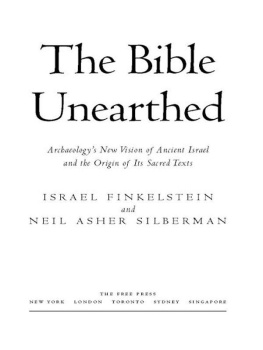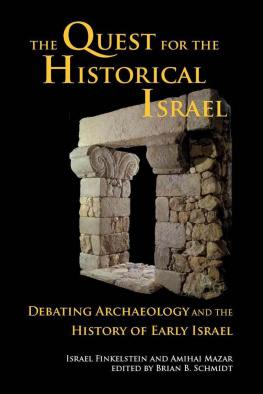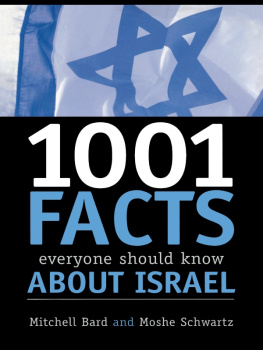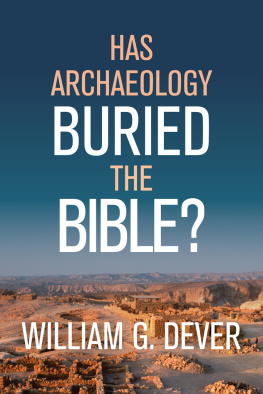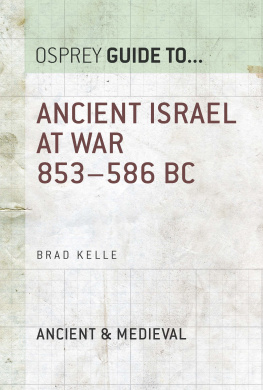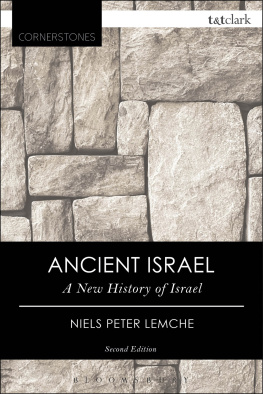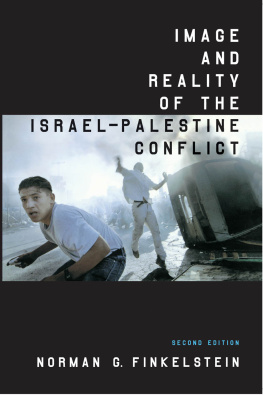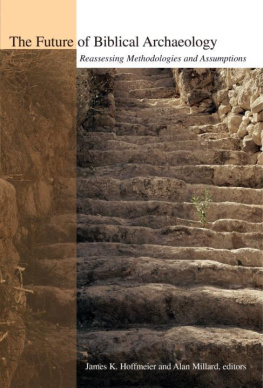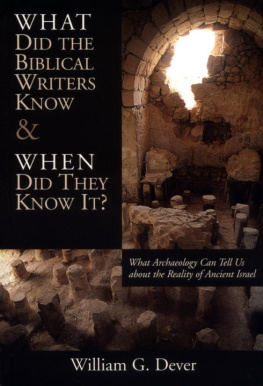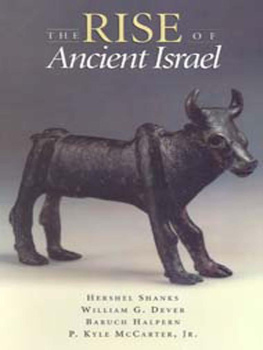
THE FREE PRESS
A Division of Simon & Schuster, Inc.
1230 Avenue of the Americas
New York, NY 10020
Visit us on the World Wide Web:
http://www.SimonandSchuster.com
Copyright 2001 by Israel Finkelstein and Neil Asher Silberman
All rights reserved,
including the right of reproduction
in whole or in part in any form.
THE FREE PRESS and colophon are trademarks
of Simon & Schuster, Inc.
ISBN 0-7432-2338-1
Acknowledgments
Almost eight years agoduring a peaceful summer weekend with our families on the coast of Mainethe idea for this book was born. The debate about the historical reliability of the Bible was again beginning to attract considerable attention outside scholarly circles and we came to the realization that an updated book on this subject for general readers was needed. In it, we would set out what we believed to be the compelling archaeological and historical evidence for a new understanding of the rise of ancient Israel and the emergence of its sacred historical texts.
Over the intervening years, the archaeological battle over the Bible has grown increasingly bitter. It has sunkin some times and placesto personal attacks and accusations of hidden political motives. Did the Exodus happen? Was there a conquest of Canaan? Did David and Solomon actually rule over a vast empire? Questions like these have attracted the attention of journalists and commentators all over the world. And the public discussion of each of these questions has often gone far beyond the confines of academic archaeology and biblical criticism into the hotly contested realms of theology and religious belief.
Despite the passions aroused by this subject, we believe that a reassessment of finds from earlier excavations and the continuing discoveries by new digs have made it clear that scholars must now approach the problems of biblical origins and ancient Israelite society from a completely new perspective. In the following chapters, we will present evidence to bolster that contention and to reconstruct a very different history of ancient Israel. Readers must judge for themselves if our reconstruction fits the evidence.
Before beginning, we must note a few items regarding sources and transliterations. Our direct quotations from the biblical text all come from the Revised Standard Version translation of the Hebrew Bible. Although we have followed the RSV in referring to the names of the God of Israel within the quotations, we have used the name YHWH in our text to designate the tetragrammaton or explicit name of God. In the RSV it is represented by the word Lord, while Elohim or Elohei is represented by the word God.
Regarding biblical chronology, with its many uncertainties and pitfalls, we have decided that a combination of dating systems provides the best match with the emerging archaeological reality: from the beginning of the Israelite monarchy to the time of Ahab, we follow the dates determined in Gershon Galil, The Chronology of the Kings of Israel and Judah (Leiden: 1996 ). For the dates of the subsequent reigns of Israelite and Judahite kings, we follow Mordecai Cogans article on Chronology in the Anchor Bible Dictionary (New York: 1992 ). Of course many uncertainties (relating to the precise dates of the earliest kings, later coregencies, and contradictions within the biblical material) remain, but we feel that in general, this chronological scheme is reliable for the purposes of this general work.
The renewed excavations of Tel Megiddo, undertaken by Tel Aviv University in partnerhip with Pennsylvania State University, have offered a unique opportunity for thinking, reflecting, and discussing with colleagues the material contained in this book. We would like to extend special thanks to the other co-directors of the Megiddo Expedition, Professors David Ussishkin and Baruch Halpern, and to the many staff members and team members of the Megiddo Expedition who have, over the years, played such an important role in the excavations and in the wider scholarly work of biblical archaeology.
The research and initial writing of this book was carried out by Israel Finkelstein during a sabbatical year in Paris and by Neil Asher Silberman in New Haven. Colleague and friend Professor Pierre de Miroschedji helped to make possible a productive and enjoyable time in Paris. During the writing of this book, the library of the Institute of Archaeology at Tel Aviv University; of the Institut Catholique, the Centre dArchologie Orientale in the Sorbonne, and the Section des Etudes Smitiques of the Collge de France in Paris; and, at Yale, the Sterling Memorial Library and the library of the Yale Divinity School all provided excellent research facilites.
Our deep appreciation goes to Judith Dekel of the Institute of Archaeology of Tel Aviv University who prepared the maps, diagrams, and drawings that appear in this book.
Professors Baruch Halpern, Nadav Naaman, Jack Sasson, and David Ussishkin have been generous with their advice and knowledge. We have been greatly helped by questions posed (and answered) in many late-night phone calls to Nadav Naaman and Baruch Halpern, who helped us to sort out the complex problems of biblical redactions and biblical history. Baruch also read and discussed with us early drafts of many of the chapters. We are grateful to these and all other friends and colleagues with whom we have consulted, even as we acknowledge that the responsibility for the final result is entirely ours.
In New York, our literary agent Carol Mann skillfully guided the project from initial idea to publication. At the Free Press, we want to thank assistant editor Daniel Freedberg for his efficiency and continuing help at every stage of the work. Senior editor Bruce Nichols has been an enthusiastic and tireless supporter of this book from the very beginning. Thanks to his perceptive insights and editorial skill, our evolving manuscript has been immeasurably improved.
Lastly, our familiesJolle, Adar, and Sarai Finkelstein and Ellen and Maya Silbermandeserve a great share of the credit for their love, patience, and willingness to forgo many weekend outings and family events while this book took shape. We can only hope that the result of our efforts justifies their confidence in usand in our idea of a book about archaeology and the Bible that first took shape in their presence just a few years ago.
I.F.
N.A.S.
Contents
PART ONE
The Bible as History?
PART TWO
The Rise and Fall of Ancient Israel
(c.930720 bce)
(884842 bce)
(842720 bce)
PART THREE
Judah and the Making of Biblical History
(c.930705 bce)
(705639 bce)
(639586 bce)
(586c. 440 bce)
PROLOGUE
In the Days of King Josiah
The world in which the Bible was created was not a mythic realm of great cities and saintly heroes, but a tiny, down-to-earth kingdom where people struggled for their future against the all-too-human fears of war, poverty, injustice, disease, famine, and drought. The historical saga contained in the Biblefrom Abrahams encounter with God and his journey to Canaan, to Moses deliverance of the children of Israel from bondage, to the rise and fall of the kingdoms of Israel and Judahwas not a miraculous revelation, but a brilliant product of the human imagination. It was first conceivedas recent archaeological findings suggestduring the span of two or three generations, about twenty-six hundred years ago. Its birthplace was the kingdom of Judah, a sparsely settled region of shepherds and farmers, ruled from an out-of-the-way royal city precariously perched in the heart of the hill country on a narrow ridge between steep, rocky ravines.

